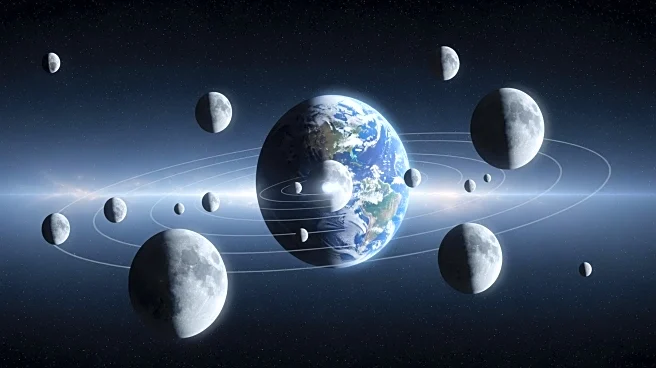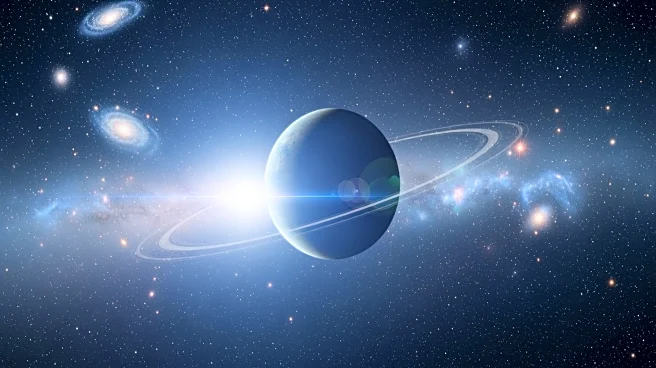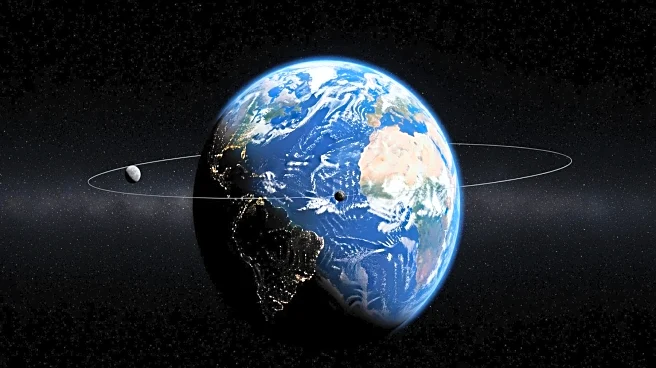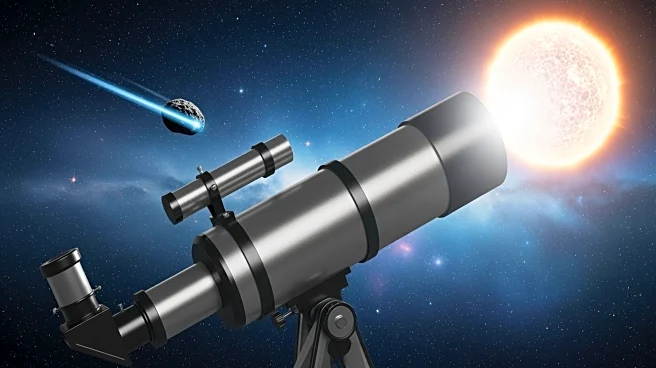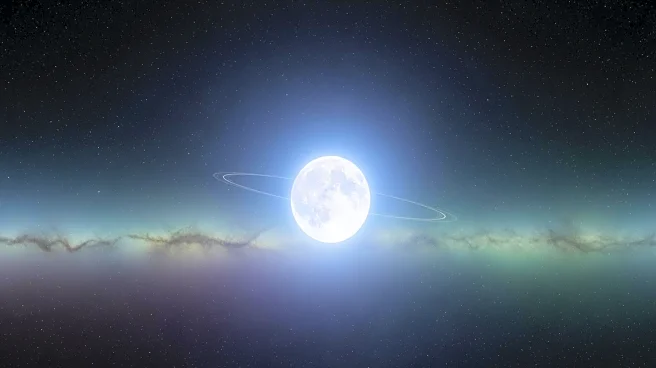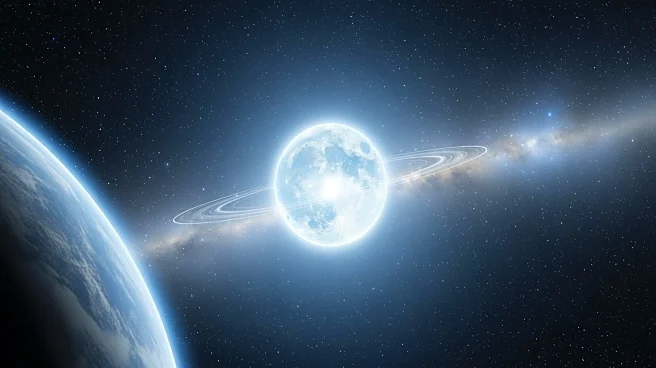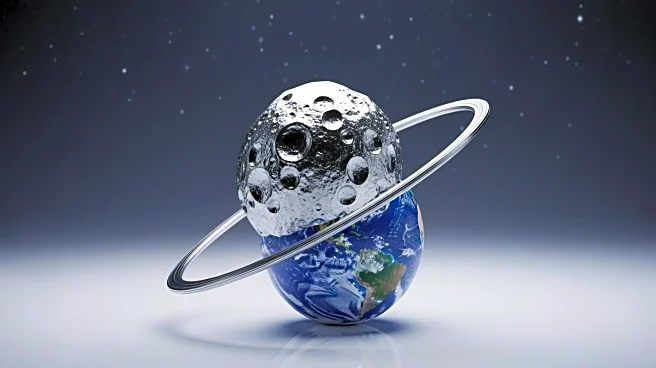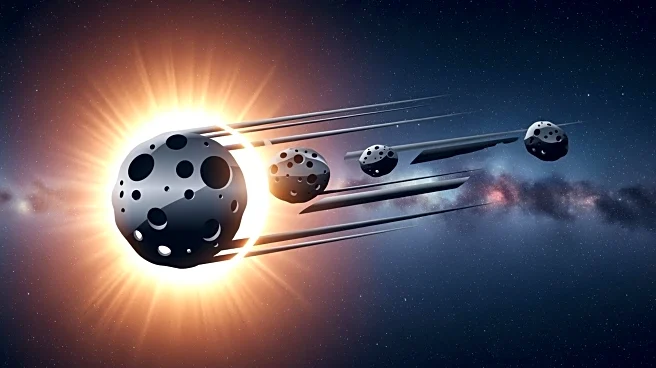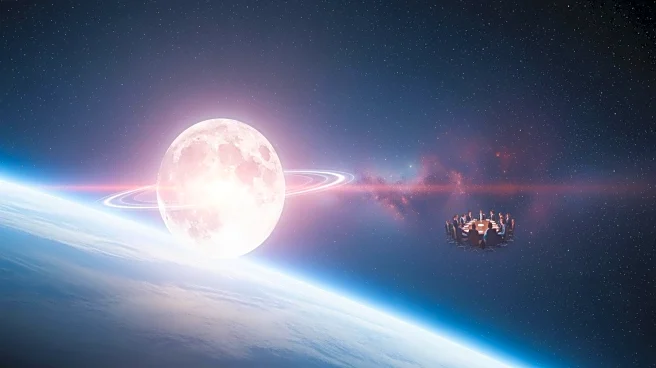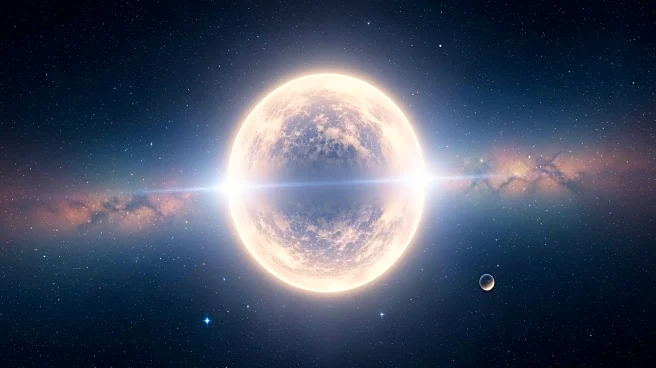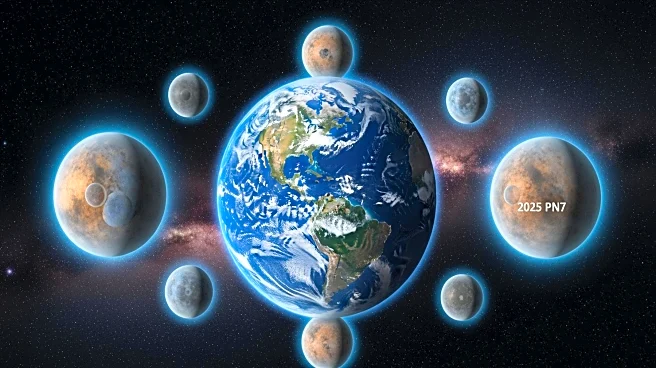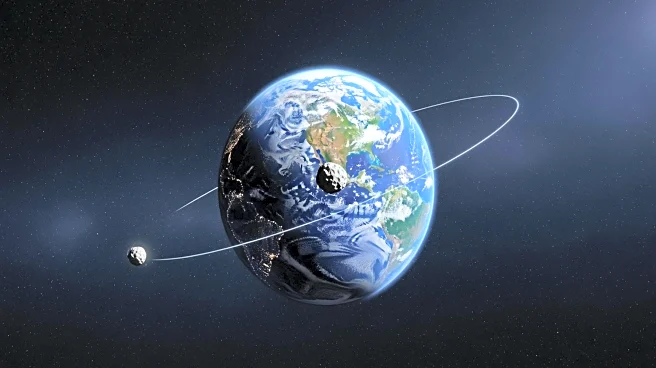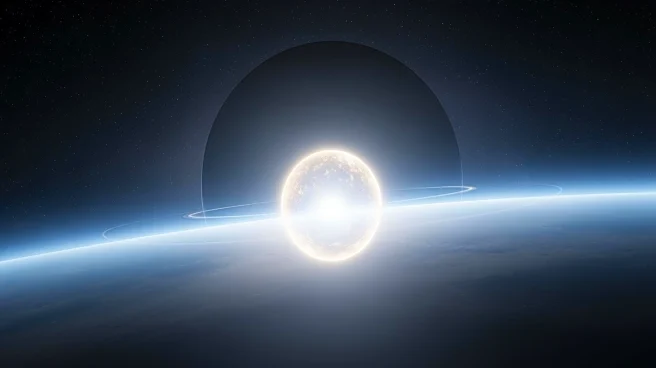What's Happening?
Astronomers have identified a new quasi-lunar moon, designated 2025 PN7, which is an Apollo-type asteroid. Detected in August using the Pan-STARRS 1 telescope in Hawaii, this celestial body is notable for its brightness. The asteroid maintains a 1:1 resonance
with Earth, meaning it orbits the sun in sync with our planet. Unlike the moon, quasi-lunar moons are not gravitationally bound to Earth but follow their own solar orbit, occasionally appearing as if they accompany Earth. 2025 PN7's closest approach to Earth is 299,000 kilometers, while it can drift as far as 17 million kilometers away. This asteroid has been in a quasi-satellite phase since 1965 and is expected to remain so until 2083.
Why It's Important?
The discovery of 2025 PN7 adds to the understanding of Earth's cosmic environment and the dynamics of near-Earth objects. Quasi-lunar moons like 2025 PN7 provide insight into the gravitational interactions and orbital mechanics of celestial bodies. This discovery underscores the potential for more such bodies to be identified, enhancing knowledge of the Arjuna group of asteroids, which share similar orbits with Earth. Understanding these dynamics is crucial for planetary defense strategies and for advancing scientific knowledge about the solar system's structure and evolution.
What's Next?
As astronomers continue to study 2025 PN7, further observations may reveal more about its composition and trajectory. The potential for discovering additional quasi-lunar moons remains high, prompting ongoing research into the Arjuna group of asteroids. These efforts could lead to new insights into the formation and behavior of near-Earth objects, influencing future space exploration and planetary defense initiatives.
Beyond the Headlines
The presence of quasi-lunar moons like 2025 PN7 raises questions about the long-term stability of such objects and their potential impact on Earth. While currently not a threat, understanding their trajectories and interactions with Earth's gravity is essential for assessing any future risks. This discovery also highlights the importance of continued investment in astronomical research and technology to monitor and understand the complex dynamics of our solar system.
